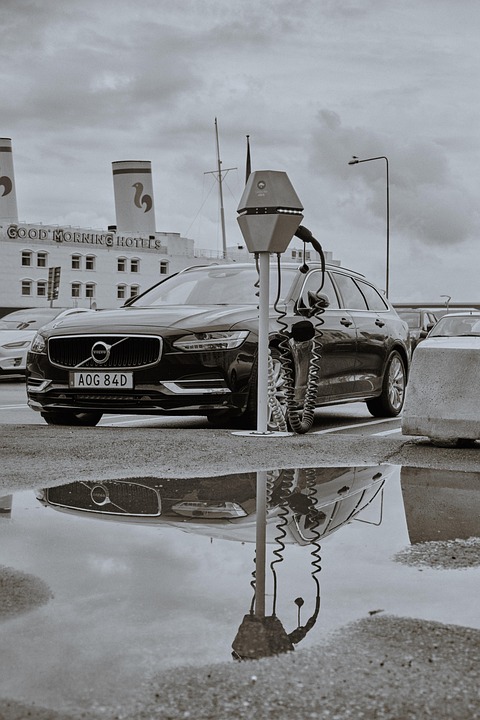Building a Brighter Future: The Importance of Expanding Electric Charging Infrastructure
In an era where environmental concerns are escalating and the automotive industry is rapidly evolving, electric vehicles (EVs) have emerged as a key solution to reducing greenhouse gas emissions. However, the widespread adoption of EVs hinges on one crucial element: an extensive network of electric charging stations. Expanding this infrastructure is not just a necessity but a cornerstone for a more sustainable future.
The Urgency of Electric Charging Infrastructure
The Shift Towards Electric Vehicles
As governments worldwide implement stricter regulations on emissions and offer various incentives to promote EV adoption, the shift towards electric vehicles has never been more prominent. According to the International Energy Agency (IEA), EV sales doubled in 2021, reflecting a growing consumer preference for cleaner transportation options. However, this surge in demand underscores an urgent need for comprehensive electric charging infrastructure to support the rising number of electric vehicles on our roads.
Current Challenges in Charging Access
Despite the growing market for EVs, the existing charging infrastructure remains inadequate. Many potential EV buyers are deterred by "range anxiety"—the fear of running out of battery power without access to charging facilities. Key challenges include:
- Insufficient Charging Stations: Many regions lack charging stations, particularly in rural and less populated areas.
- Inconsistency in Charging Options: Not all charging stations offer the same charging speeds, leading to confusion and frustration for users.
- High Installation Costs: Installing charging stations can be expensive, posing a challenge for businesses and municipalities.
Impact on Consumer Adoption
A robust electric charging network will play a pivotal role in alleviating consumer concerns and boosting adoption rates. Without it, EVs may struggle to gain traction in the automobile market. It’s essential to remove obstacles and provide clear solutions to encourage uncommitted consumers to transition to electric.
Benefits of Expanding Electric Charging Stations
Enhanced Convenience for EV Owners
Expanding the network of electric charging stations directly benefits EV owners. More charging locations mean more convenience, enabling drivers to charge their vehicles where they live, work, and travel. Cities and municipalities can play a role by integrating charging stations into public infrastructure like parking lots, public transportation hubs, and shopping centers.
Case Study: San Francisco’s Charging Stations
San Francisco has led the way in implementing innovative charging solutions. By placing charging stations throughout the city, officials have significantly reduced range anxiety among local EV drivers. This initiative demonstrates how effective urban planning can create a more electric-friendly atmosphere.
Boosting Local Economies
The expansion of electric charging stations presents economic opportunities. Businesses can attract EV owners to their locations by installing charging facilities, driving traffic and customer engagement. Additionally, the installation and maintenance of charging stations create jobs within local communities.
Environmental Benefits
Encouraging larger numbers of EVs through improved charging infrastructure contributes directly to reduced carbon emissions. According to a report by BloombergNEF, transitioning to electric vehicles could reduce global carbon dioxide emissions by up to 1.5 gigatons annually by 2040. This considerable impact depends heavily on accessible and reliable charging options.
Looking Ahead: The Future of Electric Charging
Innovations in Charging Technology
As technology progresses, so will the capabilities of electric charging infrastructure. Innovations such as wireless charging, ultra-fast chargers, and smart charging stations will enhance user experience and efficiency. For instance, ultra-fast chargers can replenish up to 80% of an EV’s battery in around 30 minutes, dramatically reducing wait times for users.
Collaboration Across Sectors
The expansion of electric charging infrastructure will require collaboration across various sectors—government, private companies, and utility providers must work together to improve access. Investments and partnerships can lead to the construction of charging stations in strategic locations, ensuring that even remote areas are covered.
Policy Support and Funding
Governments should prioritize funding for charging infrastructure. Initiatives like tax credits, grants, and subsidies can incentivize both businesses and municipalities to invest in building more charging stations. Policymakers can also designate specific areas for charging stations, ensuring that high-traffic regions are equipped for EV use.
Conclusion: A Collective Responsibility
The future of transportation is electric, but it requires an evolved approach to infrastructure. By expanding electric charging stations, we can create a more accessible, sustainable, and environmentally friendly future. This is a collective responsibility—communities, businesses, and governments must unite to ensure that the necessary infrastructure is in place to support a cleaner future for all.
To stay updated on the latest developments in electric vehicles and infrastructure, be sure to check back on Buzzo.live, where we provide insights and analysis on what’s happening in the automotive world. Let’s drive toward a greener future, one charging station at a time!


